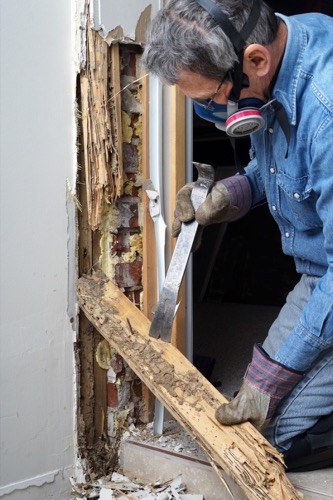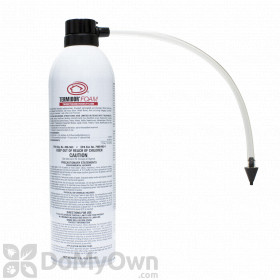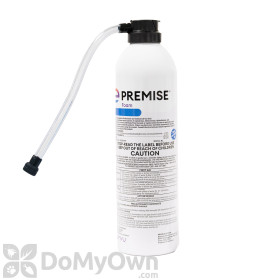
Depending on your situation, there are three drywood termite treatment solutions to choose from. Which method you use depends on if the infested wood is visible and if the wood is raw or has been stained, sealed, or painted.
We highly recommend that you contact and use a reputable pest control company if you have a widespread infestation. Widespread drywood termite infestations can be extremely hard to treat yourself. You may even need to have your home tented and fumigated. Many professional pest control companies will give you a free or low-cost inspection if you need help determining your level of infestation.
Click on one of the methods below to learn more about it or keep reading to see how to get rid of drywood termites all three ways.
Remove or Replace Infested Wood

The simplest way to get rid of drywood termites is to remove and/or replace infested wood. If the infestation is localized to one or two pieces of easily accessible wood, you can simply remove and replace the infested wood to effectively get rid of drywood termites in your home. If the wood cannot be removed or replaced, see the methods below for treatment options.
Treat Unpainted or Raw Wood with Bora-Care
Bora-Care is a concentrated borate-based product with a glycol (alcohol) base. When applied to raw or unpainted/unstained wood, Bora-Care penetrates up to 4 inches into the wood, making it more effective for drywood termite extermination than other products. Drywood termites that ingest wood that has been treated with Bora-Care will stop eating and die. Bora-Care also prevents new termites from tubing into treated wood. If applied correctly (according to the label) Bora-Care will offer protection for the lifetime of the wood. That is why many homebuilders treat the studs of a home with Bora-Care, which they may dye blue to show that wood has been treated.
To use Bora-Care, begin with the following tools and products:
- Bora-Care
- A foaming solution if you decide to foam the Bora-Care
- A 5-gallon bucket
- A paint stirrer
- A hand pump sprayer, paint brush, paint roller, or foaming device
Products needed for Method 2
Prepare the Wood
Remember, Bora-Care can only be used on wood that is not painted, stained, or sealed. You can use Bora-Care on wood that has had the finish sanded off.
Mix Bora-Care with Water

If you are treating wood that is currently infested, mix 1-part Bora-Care with 1-part water. Bora-Care should always be mixed in a 5-gallon bucket rather than directly in a hand pump sprayer because it will clog the sprayer if not pre-mixed with water. We highly recommend using hot water to mix with Bora-Care as the product is very thick and viscous and can be hard to mix.
If you are treating wood that is not infested, mix 1-part Bora-Care with 5-parts water.
Apply Bora-Care to Wood
You can spray the product and water mix onto wood with a hand-pump sprayer, foam into wall voids using a foaming additive and device, or paint the water-product mixture directly onto the wood. Most Bora-Care applications will require two coats for ideal results. Read the product label for the optimal product-to-water mixture and the number of applications needed for your situation.
The Drill-and-Fill Method of Termite Treatment
If the infested wood is painted or otherwise finished and the finish cannot be removed, you can use the drill-and-fill method for treating drywood termites.
To use the drill-and-fill method, begin with the following tools and products:
- A foam or gel drywood termite insecticide such as Premise foam, FUSE foam, or Jecta
- A drill
- A 1/8" or 1/4" drill bit
Products needed for Method 3
Drill Your Holes

First, drill holes every 8 to 10 inches along and into the infested wood. You will know when you have hit the nesting area of the termites (also called the gallery) because you will feel less resistance while drilling.
Fill Holes With Insecticide
Next, fill the holes with the drywood termite insecticide product of your choice. Read the product label as a guide for how much product should be used per hole to kill drywood termites.
Close the Holes

Finally, close the holes. Use a wood patch, putty, or other appropriate material to close or repair the holes made in the wood by your treatment.
Reminders & Next Steps
Note that this drywood termite control guide is meant to be used for smaller infestations. If you have a large, overwhelming infestation, we highly recommend calling a professional pest control company for help.
After you have treated your home for termites, learn how to prevent a drywood termite infestation or by clicking the right arrow below to read more.










